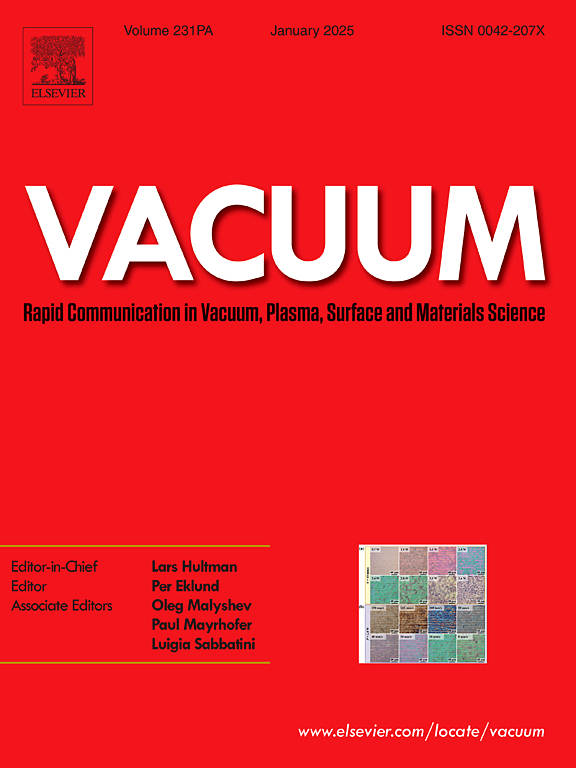MoS2 stabilize Ti3C2 MXene for excellent catalytic effect of thermal decomposition of ammonium perchlorate
IF 3.8
2区 材料科学
Q2 MATERIALS SCIENCE, MULTIDISCIPLINARY
引用次数: 0
Abstract
Ammonium perchlorate (AP), the most widely used oxidizer in energetic materials, is crucial for studying catalytic thermal decomposition. Newly discovered Ti3C2 MXene and MoS2 demonstrating promising prospects in the field of the pyrolysis catalyst in AP. In this study, we employed a hydrothermal method to anchor nano-sized MoS2 in situ on the surface of Ti3C2 MXene, leading to the fabrication of MoS2-Ti3C2 nanocomposites. Various characterizations indicated that MoS2 was attached to the surface and edges of Ti3C2, thereby enhancing the stability and conductivity. Results revealed that upon the addition of 4 wt% MoS2-Ti3C2, the low-temperature decomposition peak of AP reduced from 331.2 °C to 296.6 °C, while the high-temperature decomposition peak advanced from 427.5 °C to 387.1 °C, showing a superior catalytic effect compared to the individual MoS2 or Ti3C2. Additionally, the catalytic mechanism of MoS2-Ti3C2 on the thermal decomposition of AP may involve enhanced electrical conductivity, facilitating rapid proton transfer (H+), accelerated redox reactions, prompt release of gas products, and thereby expediting the progression of the decomposition reaction. Consequently, it can be anticipated that anchoring MoS2 on the surface of Ti3C2 represents an effective strategy for enhancing the catalytic activity of Ti3C2 MXene towards the thermal decomposition of AP.
MoS2 稳定 Ti3C2 MXene,为高氯酸铵的热分解提供出色的催化效果
高氯酸铵(AP)是高能材料中应用最广泛的氧化剂,对于研究催化热分解至关重要。新发现的 Ti3C2 MXene 和 MoS2 在高氯酸铵热分解催化剂领域展示了广阔的前景。在本研究中,我们采用水热法将纳米级 MoS2 原位锚定在 Ti3C2 MXene 表面,从而制备出 MoS2-Ti3C2 纳米复合材料。各种表征表明,MoS2 附着在 Ti3C2 的表面和边缘,从而提高了稳定性和导电性。结果表明,添加 4 wt% 的 MoS2-Ti3C2 后,AP 的低温分解峰值从 331.2 ℃ 降至 296.6 ℃,而高温分解峰值则从 427.5 ℃ 升至 387.1 ℃,显示出与单独的 MoS2 或 Ti3C2 相比更优越的催化效果。此外,MoS2-Ti3C2 对 AP 热分解的催化机理可能包括增强导电性,促进质子(H+)快速转移,加速氧化还原反应,迅速释放气体产物,从而加快分解反应的进程。因此,可以预计在 Ti3C2 表面锚定 MoS2 是增强 Ti3C2 MXene 对 AP 热分解催化活性的有效策略。
本文章由计算机程序翻译,如有差异,请以英文原文为准。
求助全文
约1分钟内获得全文
求助全文
来源期刊

Vacuum
工程技术-材料科学:综合
CiteScore
6.80
自引率
17.50%
发文量
0
审稿时长
34 days
期刊介绍:
Vacuum is an international rapid publications journal with a focus on short communication. All papers are peer-reviewed, with the review process for short communication geared towards very fast turnaround times. The journal also published full research papers, thematic issues and selected papers from leading conferences.
A report in Vacuum should represent a major advance in an area that involves a controlled environment at pressures of one atmosphere or below.
The scope of the journal includes:
1. Vacuum; original developments in vacuum pumping and instrumentation, vacuum measurement, vacuum gas dynamics, gas-surface interactions, surface treatment for UHV applications and low outgassing, vacuum melting, sintering, and vacuum metrology. Technology and solutions for large-scale facilities (e.g., particle accelerators and fusion devices). New instrumentation ( e.g., detectors and electron microscopes).
2. Plasma science; advances in PVD, CVD, plasma-assisted CVD, ion sources, deposition processes and analysis.
3. Surface science; surface engineering, surface chemistry, surface analysis, crystal growth, ion-surface interactions and etching, nanometer-scale processing, surface modification.
4. Materials science; novel functional or structural materials. Metals, ceramics, and polymers. Experiments, simulations, and modelling for understanding structure-property relationships. Thin films and coatings. Nanostructures and ion implantation.
 求助内容:
求助内容: 应助结果提醒方式:
应助结果提醒方式:


